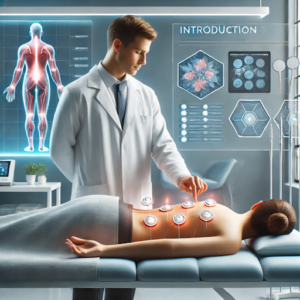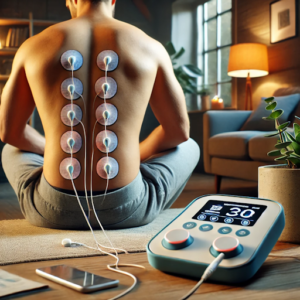Optimize Back Pain Relief with Electrotherapy Techniques
Back pain is a pervasive issue impacting millions of individuals globally, transcending various demographics such as age, gender, and lifestyle factors. It can manifest in diverse forms, ranging from sharp discomfort that lasts a few days to chronic pain that endures for months or even years. Often, back pain arises from a combination of physical, psychological, and environmental influences, making it a complex condition to address effectively.
Common causes of back pain include muscle strain, herniated discs, arthritis, and poor posture. The variability in how individuals experience back pain complicates the diagnosis and treatment process. While some may find the discomfort tolerable, others could be severely debilitated, necessitating a comprehensive approach from healthcare professionals to restore function and alleviate pain.
Moreover, chronic back pain can significantly affect emotional well-being, often leading to anxiety, depression, and social isolation. The economic implications are also substantial, as back pain is among the leading causes of disability and reduced productivity in the workplace, impacting both personal and professional lives.
Understanding the underlying causes of back pain is crucial for developing effective treatment strategies. One such strategy is electrotherapy, which has gained recognition for its ability to relieve pain and promote recovery in a non-invasive manner.
Essential Insights on Back Pain and Electrotherapy
- Back pain can arise from various factors, including poor posture, muscle strain, and injury, significantly affecting daily life.
- Electrotherapy is a non-invasive technique that utilizes electrical energy to manage pain and facilitate healing.
- This method offers multiple benefits, such as pain relief, muscle relaxation, enhanced circulation, and reduced inflammation.
- Different electrotherapy modalities, such as TENS (Transcutaneous Electrical Nerve Stimulation) and EMS (Electrical Muscle Stimulation), can effectively alleviate back pain.
- It is vital to adhere to healthcare professional guidance when using electrotherapy and to avoid using it near the heart or on broken skin.
 Exploring the Benefits of Electrotherapy for Back Pain Relief
Exploring the Benefits of Electrotherapy for Back Pain Relief
Electrotherapy encompasses a variety of techniques that utilize electrical energy to treat conditions such as back pain. This therapeutic approach has evolved significantly, incorporating advanced technologies to provide effective pain relief and facilitate the healing process. By delivering precise electrical impulses, electrotherapy targets specific areas of discomfort, stimulating nerves and muscles effectively.
Unlike traditional medications, which may lead to unwanted side effects or dependency, electrotherapy is a non-invasive treatment option that can help manage back pain. As research continues to unfold, the numerous benefits of electrotherapy are becoming more widely recognized, leading to its integration into comprehensive pain management plans employed by healthcare providers.
One of the most notable advantages of electrotherapy is its capacity to provide immediate pain relief. By interrupting pain signals with electrical impulses directed at the affected area, electrotherapy effectively reduces discomfort.
Moreover, this therapeutic modality promotes the release of endorphins, the body’s natural pain relievers, which enhances its overall effectiveness. Additionally, electrotherapy improves blood circulation and reduces inflammation, supporting the healing process. This combination of immediate relief and long-term benefits makes electrotherapy an invaluable tool for those struggling with back pain.
Diverse Electrotherapy Methods for Targeted Back Pain Management
Electrotherapy encompasses various methods, each tailored to address different aspects of back pain management. TENS (Transcutaneous Electrical Nerve Stimulation) is a widely recognized technique that delivers low-voltage electrical currents to alleviate pain. Its portability and user-friendly nature make it particularly suitable for home treatment, allowing individuals to manage their pain conveniently.
IFC (Interferential Current Therapy) utilizes medium-frequency electrical currents to penetrate deeper tissues and effectively address musculoskeletal issues. This technique is especially beneficial for individuals dealing with persistent pain that originates from deeper structures within the body.
In addition, EMS (Electrical Muscle Stimulation) and microcurrent therapy are gaining traction for their ability to stimulate muscle contractions and support tissue repair. These modalities not only help alleviate pain but also enhance muscle function, promoting overall recovery.
 Guidelines for Effectively Using Electrotherapy to Manage Back Pain
Guidelines for Effectively Using Electrotherapy to Manage Back Pain
Following specific guidelines is crucial to ensuring the safety and effectiveness of electrotherapy. Patients should always consult with a healthcare provider to determine the most appropriate electrotherapy options based on their individual needs and conditions. Once a treatment plan is established, therapy can be administered in clinical settings or through portable devices at home.
For those using electrotherapy at home, it is essential to adhere to the manufacturer's instructions regarding electrode placement, intensity, and session duration. A typical session usually lasts between 20 and 60 minutes, and consistency is vital, as regular treatments yield cumulative benefits over time. Maintaining open communication with a healthcare provider is essential for tracking progress and making necessary adjustments to the treatment plan.
Important Precautions and Considerations for Electrotherapy Use
While electrotherapy is generally regarded as safe, certain precautions should be taken to avoid potential complications. Individuals with heart disease, epilepsy, or implanted devices like pacemakers should consult a healthcare provider before using electrotherapy to ensure their safety. Pregnant women are also advised to avoid electrotherapy in areas near the abdomen or lower back, as it could potentially affect the developing fetus.
It is crucial to avoid placing electrodes on open wounds or infected areas to prevent further complications. Patients should monitor their bodies for any adverse reactions during treatment. If they experience increased pain or skin irritation, it is important to stop the therapy immediately and consult with a healthcare professional for further guidance.
 Enhancing Back Pain Management: Integrating Electrotherapy with Holistic Techniques
Enhancing Back Pain Management: Integrating Electrotherapy with Holistic Techniques
Integrating electrotherapy with other treatment modalities can significantly enhance the management of back pain. A holistic approach often yields better results compared to relying on a single therapy. For instance, combining electrotherapy with physical therapy can not only strengthen muscles but also improve flexibility while addressing underlying musculoskeletal problems.
Making ergonomic adjustments in your workspace or home environment can further amplify the benefits of electrotherapy by reducing strain on the back. Additionally, incorporating stress-reducing practices such as yoga, meditation, or mindfulness can alleviate pain perception by promoting relaxation and enhancing overall well-being.
Frequently Asked Questions About Electrotherapy for Back Pain Management
What is electrotherapy, and how does it work for back pain relief?
Electrotherapy employs electrical stimulation to manage and alleviate back pain through various methods, including TENS and EMS, providing both pain relief and muscle stimulation.
How might electrotherapy alleviate my back pain effectively?
Electrotherapy stimulates nerves and muscles to enhance blood flow, promote healing, block pain signals, and trigger the production of endorphins, which are the body’s natural painkillers.
Is electrotherapy considered a safe option for managing back pain?
Electrotherapy is generally safe when administered under the guidance of a trained healthcare provider. Always adhere to recommended protocols and avoid applying the device near sensitive areas like the head or heart.
What mechanisms does electrotherapy utilize to relieve back pain?
Electrotherapy alleviates pain, reduces muscle spasms, and enhances flexibility, offering a non-invasive and drug-free alternative for effective back pain management.
Who can benefit from electrotherapy in managing back pain?
Electrotherapy may be advantageous for individuals experiencing conditions such as muscle strains, arthritis, sciatica, or herniated discs, particularly as part of a comprehensive pain management strategy.
Are there specific situations where electrotherapy isn't recommended?
Electrotherapy is not advisable for individuals with pacemakers, epilepsy, or heart conditions. Always consult a healthcare provider before beginning treatment.
Brought To You By: Back Pain Therapy
The article: Managing Back Pain with Electrotherapy appeared first on https://mcrtherapies.co.uk.
The article: Managing Back Pain with Electrotherapy appeared first on https://mcrtherapies.com.
The article: Managing Back Pain with Electrotherapy was found on https://limitsofstrategy.com.
The Article Electrotherapy: A Powerful Solution for Back Pain Management First Appeared ON
: https://ad4sc.com
Comments are closed